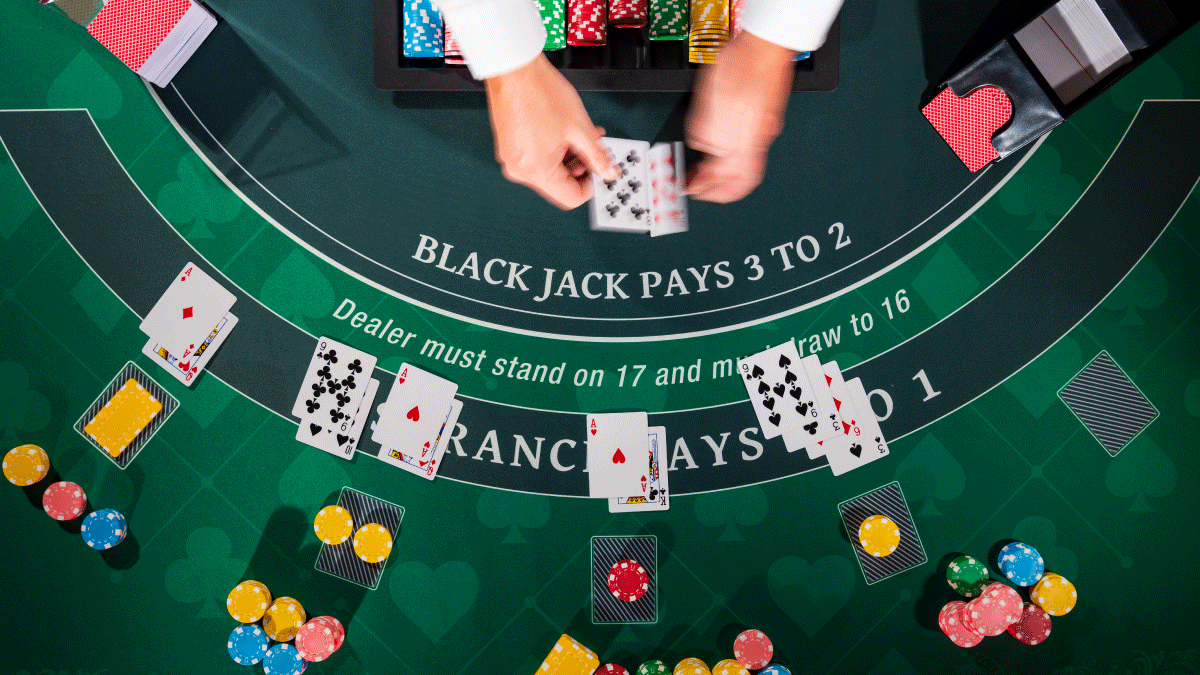Blackjack’s fast-paced gameplay, the illusion of control, and the constant interplay of luck and skill can lead to compulsive behavior since players continue to play to try to outsmart the dealer and change the tides of their luck.
Blackjack is the pinnacle for a game of probability. After being dealt two cards, you only have two options: hit to draw another card or stand to keep your current hand– all with the goal of getting as close to 21 without busting. The dealer follows set rules to draw cards, which adds a layer of predictability that players often misinterpret as control over the outcome. This illusion of control is exactly why the game is so addicting because players feel that they could control the tide of the game at any time, even if they are in debt. The house edge in blackjack is relatively low compared to other casino games, which gives players the sense that they can win consistently.
The thrill of getting close to 21, the disappointment of busting, and the satisfaction of a blackjack (an ace and a ten-value card) create a rollercoaster of emotions and an intense mood that permeates throughout the game. When playing this game, a lot of the sentiments were “Hit! (ends up busting) damn that’s tragic” and “You play wrong you get SHOT. Cuz that would’ve gone to dealer” or “(hit and end up busting) SHIT! I’m SO SAD.” As players experience these highs and lows, they can become hooked on the emotional payout, compelling them to keep playing just to experience another “high” or “win.”
Moreover, the randomness in the shuffle and dealing of the cards feeds into the addiction. In most of the rounds I played, players kept getting a bust because we were tempted to hit closer to 21 even though a large portion of the deck had 10 point value cards. At some point, getting a 19 or 20 point value wasn’t enough because it wasn’t 21. The randomness of card distribution means that even with perfect strategy, players can experience streaks of bad luck, continuing the gameplay time.
Blackjack’s design capitalizes on people trying to seek patterns and predict outcomes. Players might remember winning streaks and believe they can replicate them, while losses are attributed to bad luck rather than the randomness of the game.
We also played with house rules, so the dealer’s actions were constrained by specific rules: hitting on 16 or less and standing on 17 or more. These rules appeared to put the house at a disadvantage and allowed players to predict outcomes to some extent, contributing to this illusion of control over the game. While in reality, this contributed to people becoming overconfident and risky in their gameplay, which feeds into this cycle of addiction. I remember a lot of us trying to flip until we get over 17 because we knew the house was going to get 17 anyways, but we ended up consistently getting over 21.
When compared to other games of chance like roulette or slot machines, blackjack has an additional element of strategy and player input that is missing from those games of submission. Roulette and slot machines are basically luck-based, with barely any player influence over the outcome. These games also employ random number generators and predetermined odds to keep players engaged, but they lack the strategic element that blackjack offers where players can physically change their hands. On the other hand, in Blackjack, players use basic strategy to influence their chances of winning, creating a sense of mastery and control that is absent in these luck-based games. This perceived control can make losses feel more like personal failures, prompting players to try “just one more hand” to get it right. In some particular rounds, I heard a lot of shouting like “I finally won. I’m down so much” and “Oh she (the dealer) won. She would’ve won regardless.”
Continuing this thought, I feel that Blackjack masters the element of game balance where it employs both luck and skill to where players of all skills feel invested in the game and confident when playing. No matter their age or mastery level, they still feel they have “luck” on their side and some strategy to use to give an edge, but not totally overpower the game to the point where it feels that they can’t ever win. The rounds are too fast and change quickly for there to be a time where it’s a “stalemate” or stagnant.
To prevent the risk of addiction, game designers and regulators could implement several measures like providing information about the odds and randomness of the game and setting limits on consecutive plays. Additionally, integrating mandatory breaks and reminders of time spent playing can help stop the endless cycle of gameplay.



